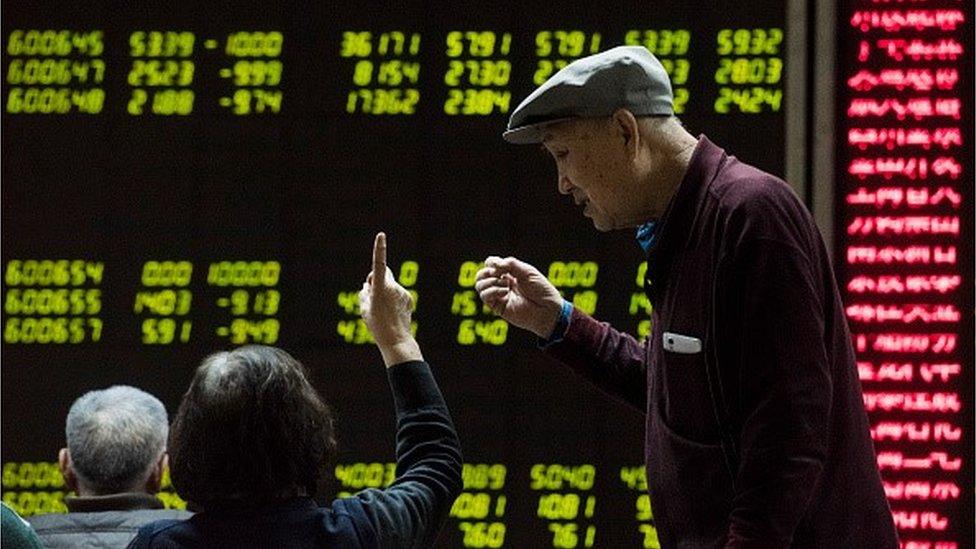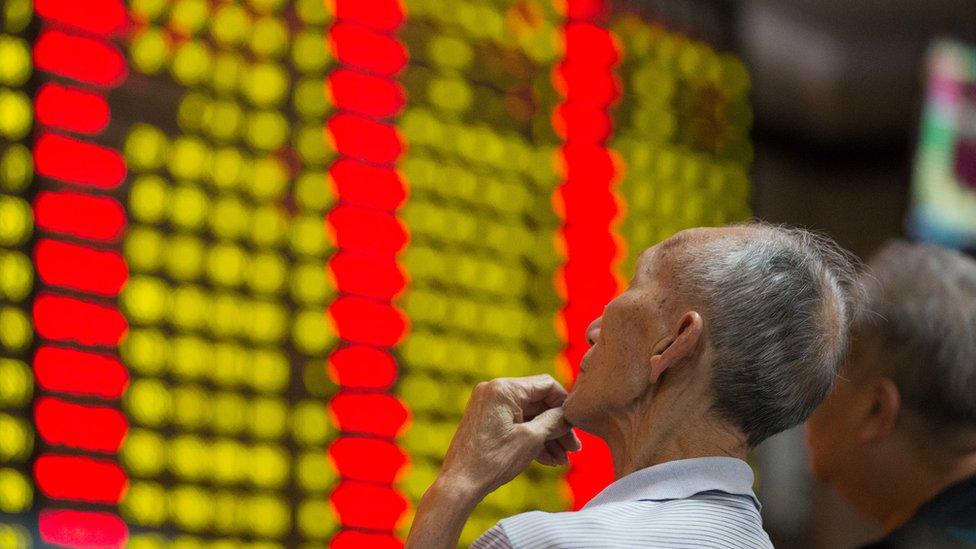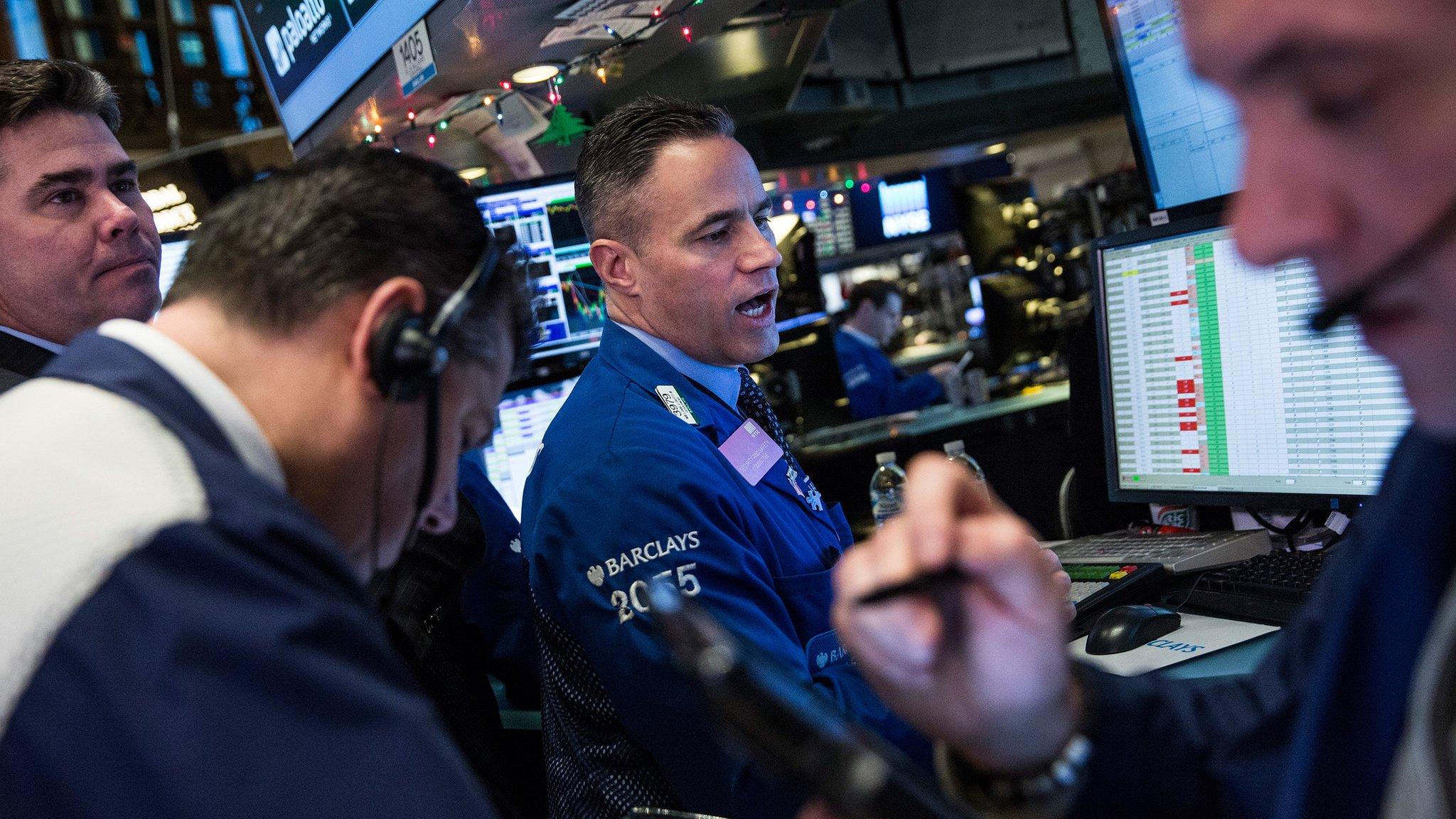China suspends circuit breaker
- Published

China will suspend its new stock market circuit-breaker mechanism - designed to stop free-falling prices - from Friday, the Shanghai and Shenzhen stock exchanges have said.
The mechanism, which had been in place since the start of this year, suspends trading on China's main stock markets if stocks fall 7%.
That circuit-breaker was activated twice this week alone.
On Thursday, it was triggered within half an hour of trading.
That gave China's stock markets their shortest trading day in 25 years.
"After weighing advantages and disadvantages, currently the negative effect is bigger than the positive one. Therefore, in order to maintain market stability, CSRC has decided to suspend the circuit-breaker mechanism," a statement from the China Securities Regulatory Commission (CSRC) said.
The renewed share suspension in China caused global shares to fall sharply on Thursday, with Wall Street opening more than 1% lower and European markets trading 2% down.

Analysis: Karishma Vaswani, Asia business correspondent
Meddling in markets can only lead to misery - at least, that's certainly what many in China's financial circles may now be thinking.
The circuit-breakers were designed to "protect investors and calm markets", according to regulators, but they have had the opposite effect.
Analysts have criticised Chinese authorities for not being clear enough in their communication to the market, and for being too heavy-handed in their attempts to control share prices.
This move may well rattle the confidence of investors even further. Watch out for more volatility on Friday.

Investors are nervous after the Chinese central bank moved to weaken the the country's currency, the yuan, for the eighth day running, sparking fears of a currency war.
This move is designed to boost exports by making Chinese goods cheaper outside the country, analysts have speculated.
It is also being interpreted as an indication that consumer demand in China may be slowing more sharply than feared.
Official economic growth in China is still running at just below 7%.
But moves to devalue the yuan suggest attempts to shift the economy from an export-led one to a consumer and services-led one are running into problems.

What are China's 'circuit-breakers'?
The measures were announced in December after a summer of dramatic market losses - used for the first time time on Monday and again on Thursday
They automatically stop trading in stock markets that drop or appreciate too sharply - a 15-minute break if the CSI 300 Index moves 5% from the market's previous close, or a whole-day halt if it moves 7% or more.
Supposedly introduced to limit panic buying and selling - which is more likely in small investor-dominated markets like China's - but critics say they only add to selling pressure the next day.

Analysts said Beijing's introduction of the circuit-breaker mechanism had proved counter-productive. Investors had panicked they would not be able to sell shares they did not want, rather than being reassured over market stability.
The system is based on the China's CSI 300 index, which tracks the largest 300 stocks on the Shanghai and Shenzhen stock exchanges and was triggered for the first time on Monday.
If the index falls by 5%, the markets are suspended for 15 minutes.
But when trading resumed after the initial halt on Thursday, it took only one minute for the 7% threshold to be reached, prompting a shutdown for the rest of the day.
- Published7 January 2016
- Published7 January 2016

- Published4 January 2016
